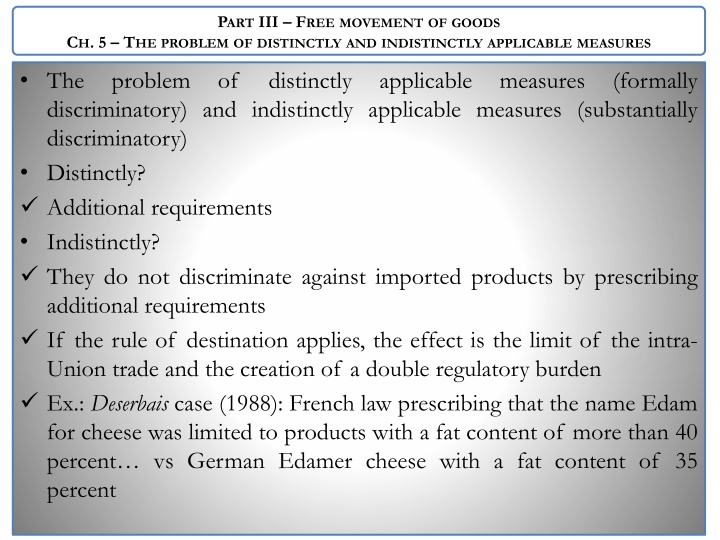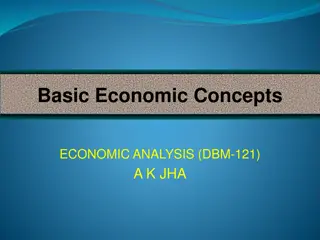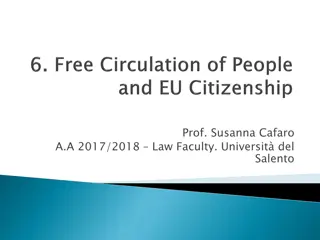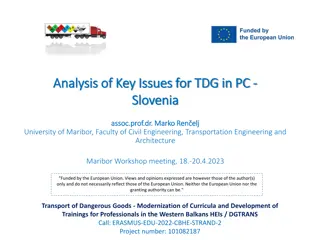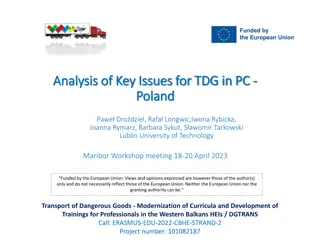Distinctly and Indistinctly Applicable Measures in Free Movement of Goods
Discriminatory and indistinctly applicable measures in the context of free movement of goods within the EU are explored, including the implications of distinctly and indistinctly applicable measures, justifications, and case studies.
Download Presentation

Please find below an Image/Link to download the presentation.
The content on the website is provided AS IS for your information and personal use only. It may not be sold, licensed, or shared on other websites without obtaining consent from the author.If you encounter any issues during the download, it is possible that the publisher has removed the file from their server.
You are allowed to download the files provided on this website for personal or commercial use, subject to the condition that they are used lawfully. All files are the property of their respective owners.
The content on the website is provided AS IS for your information and personal use only. It may not be sold, licensed, or shared on other websites without obtaining consent from the author.
E N D
Presentation Transcript
PART III FREE MOVEMENT OF GOODS CH. 5 THE PROBLEM OF DISTINCTLY AND INDISTINCTLY APPLICABLE MEASURES The discriminatory) and indistinctly applicable measures (substantially discriminatory) Distinctly? Additional requirements Indistinctly? They do not discriminate against imported products by prescribing additional requirements If the rule of destination applies, the effect is the limit of the intra- Union trade and the creation of a double regulatory burden Ex.: Deserbais case (1988): French law prescribing that the name Edam for cheese was limited to products with a fat content of more than 40 percent vs German Edamer cheese with a fat content of 35 percent problem of distinctly applicable measures (formally
PART III FREE MOVEMENT OF GOODS CH. 6 CASSIS AND BEYOND Facts At that time no harmonization on alcohol Mutual recognition Law of the country of origin What kind of product rules? Multiculturalism + different but equal Problems: vs local democracy (product quality?) MS different conceptions of food, security etc. Indistinctly applicable measures Justifications/mandatory requirements vs Art. 36 TFEU Which measures do they apply for? What kind of objectives? What kind of criteria (necessity, proportionality)?
PART III FREE MOVEMENT OF GOODS CH. 7 KECK AND BEYOND Dassonville formula too broad To what extent an indistinctly applicable measure must be prohibited pursuant to Article 34? Ex.: Sunday trading saga Keck: need for a clearer differentiation between prohibited measures and non prohibited measures between product requirements (characteristics of the products) and selling arrangements (how products are sold) The latter prima facie outside Art. 34 if affect in the same way national and foreign products Ex. of product requirements: Mars ice cream bars/cocoa Ex. of selling arrangements: accessories/Punto casa processed milk/medical
PART III FREE MOVEMENT OF GOODS CH. 8 JUSTIFICATIONS/PUBLIC GOODS Fair balance Once again: local democracy vs free market/side effects of globalization Art. 36 and mandatory requirements Static vs dynamic No harmonization Non economic considerations Burden of proof on the State Cassis clause only vs indistinctly applicable measures. Why? Proportionality: suitable/appropriate measure to achieve the goal (in principle) necessary/not beyond what is necessary to achieve the intended outcomes (less restrictive means) Ex.: Cassis + Art. 36 (Commission v. Denmark/Conegate)
